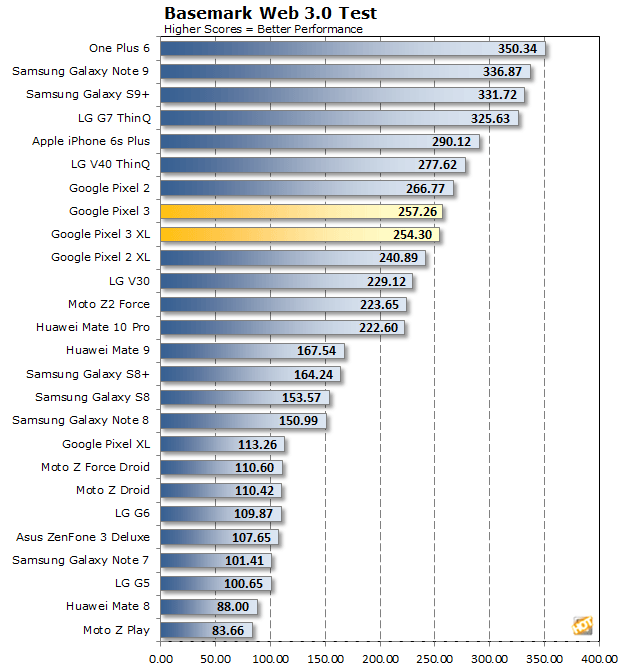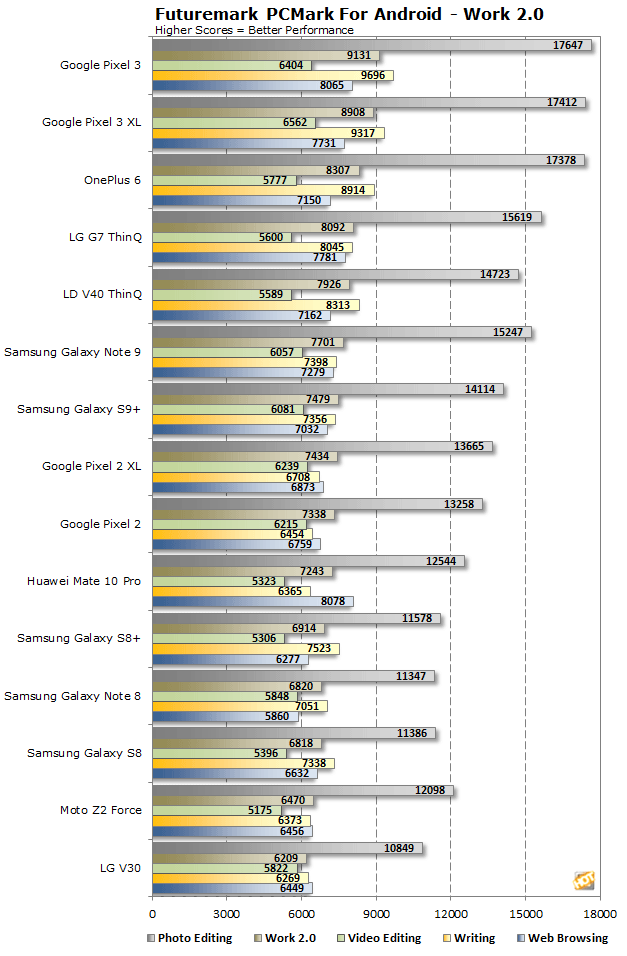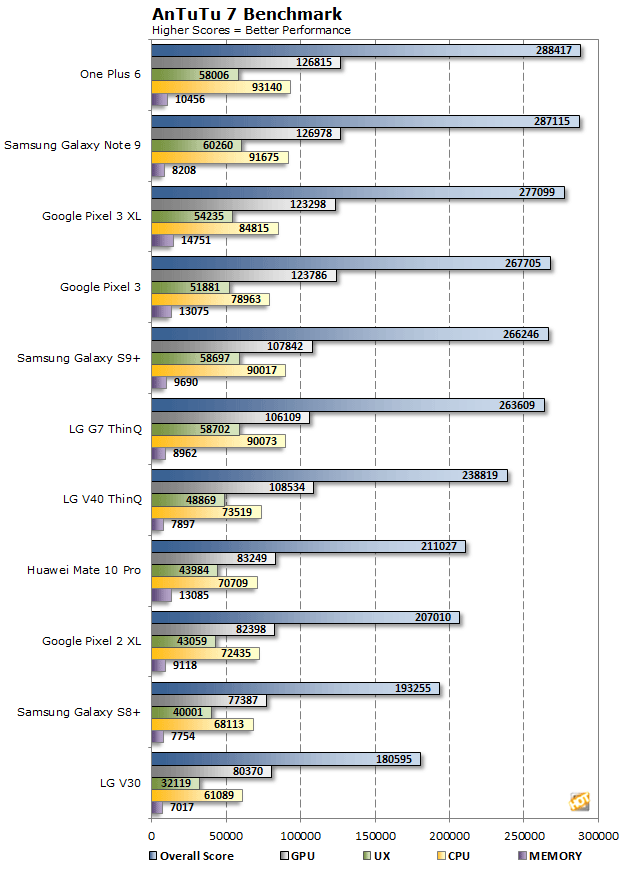For our first set of tests with the Google Pixel 3 and Pixel 3 XL we've got the JetStream
benchmark to assess Javascript
performance and RightWare’s Web Test 3.0 for a more comprehensive, mixed-media in-browser performance analysis, including HTML5
rendering. Here we'll primarily determine how the Pixel 3 and Pixel 3 XL's Snapdragon 845
SoC handles these workloads, along with their pure Android Pie installation, 4GB of RAM, and the Chrome web browser...
 |
|
JetStream And Basemark Web 3.0 |
| JavaScript and Browser Testing |
|


The Google Pixel 3 and Pixel 3 XL just missed the mark set by many of today's competing Android-based flagships. The Pixel 3 and Pixel 3 XL's smaller memory compliment and updates / changes made with Pie are the likely reasons for the somewhat lower performance, but the deltas aren't large enough to be a concern. Browsing on the Pixel 3 and Pixel 3 XL is as good or better than any other smartphone we've used.
 |
|
GeekBench |
|
Synthetic CPU Benchmark |
|
In the GeekBench test, we're stressing only CPU cores in a handset (not graphics), with both single and multi-threaded workloads. The test is comprised of encryption processing, image compression, HTML5 parsing, physics calculations, and other general purpose compute workloads.

The Google Pixel 3 and Pixel 3 XL put up strong single-core results in GeekBench, but trailed the other Snapdragon 845-based flagships in the multi-core test. To optimize battery life, Google was most likely less aggressive with the Pixel 3 and Pixel 3 XL's clocks / power profile, which result in the slightly lower multi-core performance.
 |
|
Futuremark PCMark For Android |
|
General Purpose Pocket Computing Performance Metrics |
|
Futuremark's PCMark for Android is a new benchmark addition here for us, so we have fewer results in our database of tested phones to show you. However, this is an excellent suite of tests that we highly recommend for benchmarking performance of a handset with heavier-duty tasks for things like image and video editing, as well as lighter-duty workloads like email, and web browsing. When you see the test running live it's clear the scripted application tests are carefully selected and tuned to make use of the platforms involved in a very controlled way.
In the all-encompassing PCMark Work 2.0 benchmark, the Google Pixel 3 and Pixel 3 XL jump out into the lead over every smartphone we've tested. UX performance tuning in Android Pie and relatively fast memory and storage in the Pixel 3 and Pixel 3 XL are what push it into the pole position here.
 |
|
AnTuTu 7 |
|
Platform Benchmarks |
|
AnTuTu’s latest benchmark returns a number of metrics ranked with somewhat nebulous scores, rather than frame rates or time to complete. We tested with the latest version of AnTuTu across all platforms including Android, iOS and even Windows Phone. AnTuTu returns four top level performance metric results that we are including here: CPU, RAM, 3D, UX (or User Experience), along with a total score.

The Google Pixel 3 and Pixel 3 XL finish up near the top of the charts here in terms of their overall scores. What you'll notice if you look at the individual results, however, is that Google's latest flagships crush all of the other phones in terms of memory performance. All other things being relative equal, that fast memory translates into a smoother more responsive experience when using these phones.











